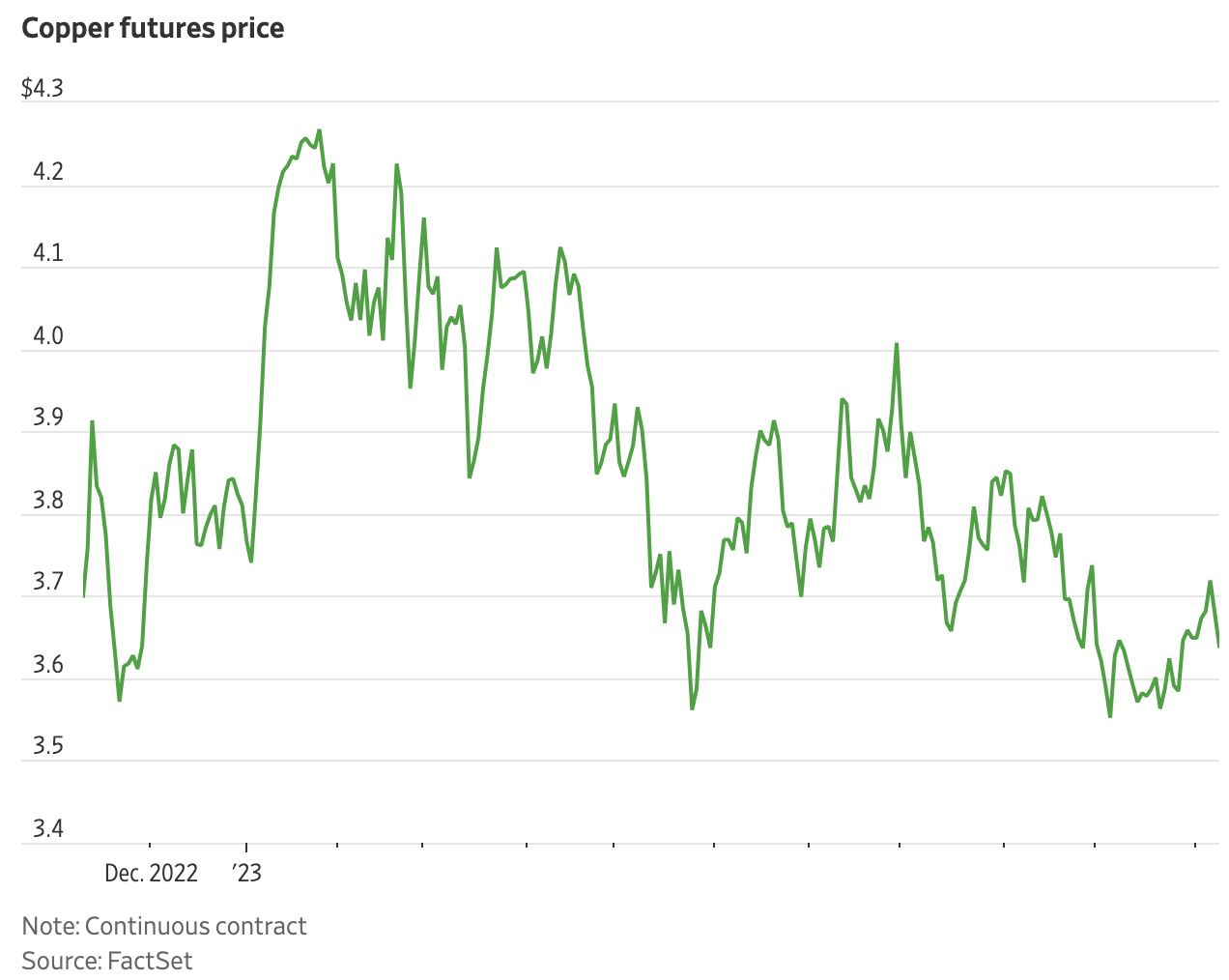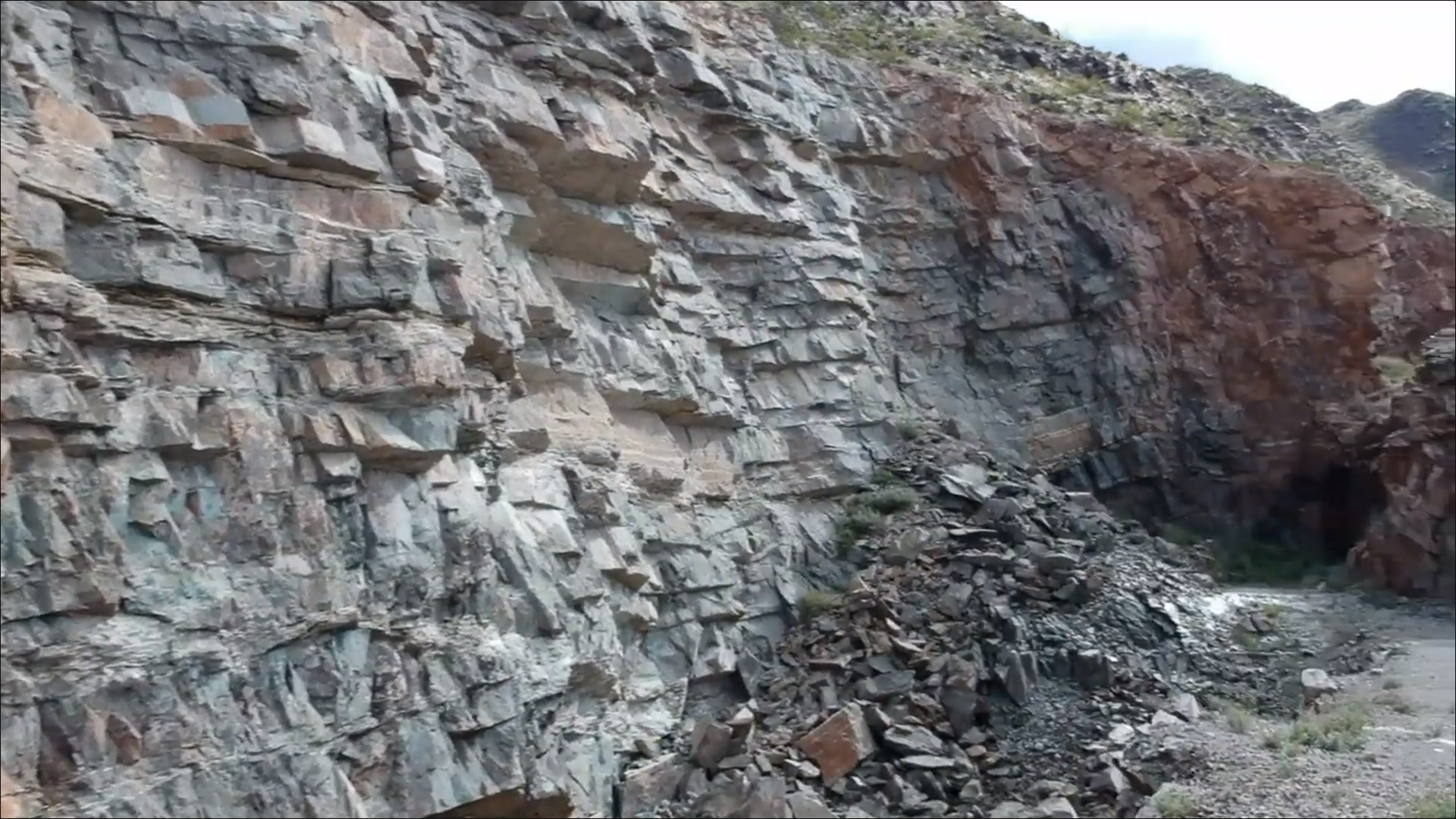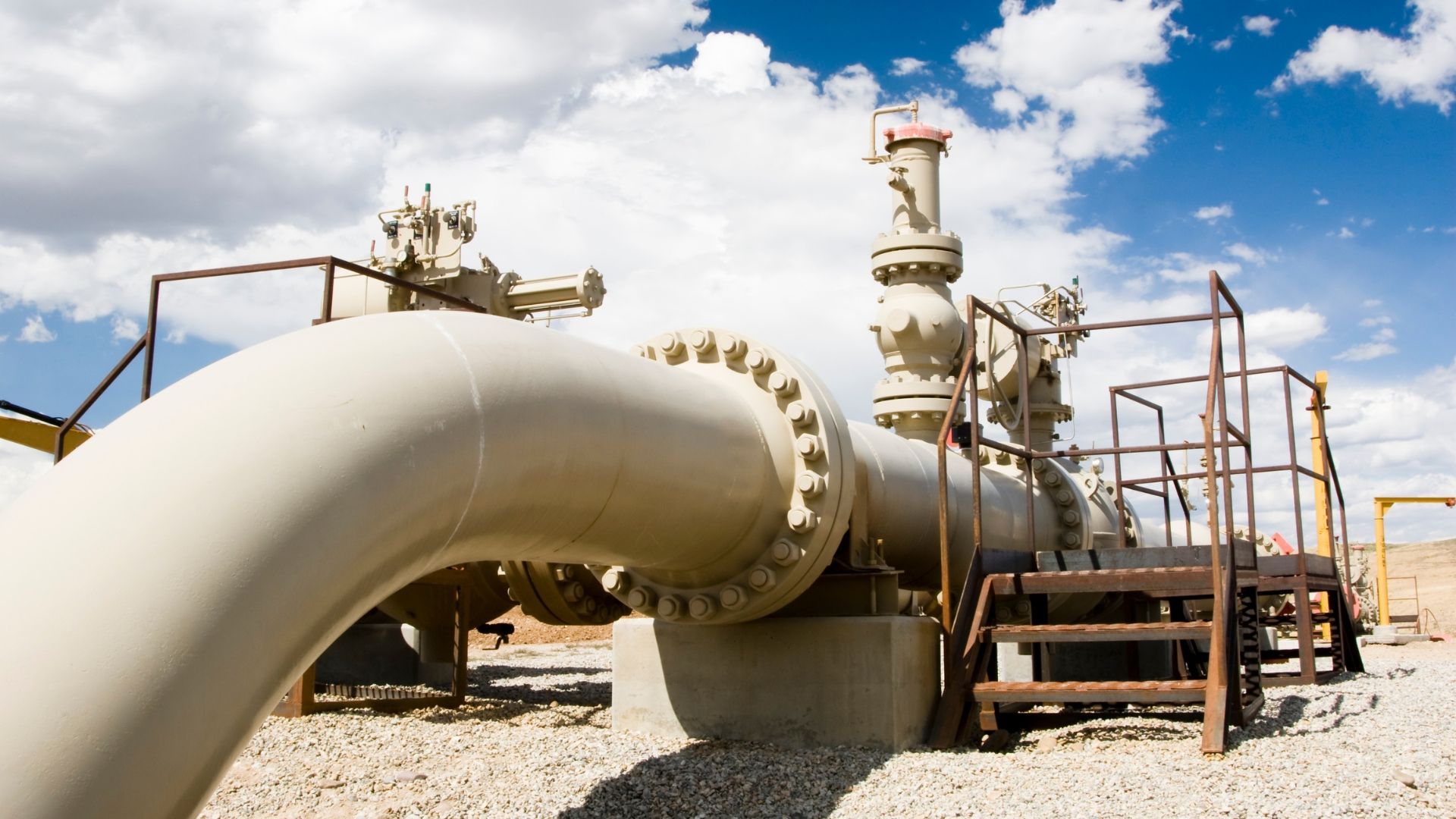Green-energy transition requires increasing supplies, but demand is waning
Nov. 11, 2023 8:00 am ET
A prolonged slide in copper prices is challenging the world’s shift to renewable energy sources.
Mining firms will need to dig up gigantic amounts of new copper over the next several years to supply the transition to renewables. But demand is slumping right now from manufacturers and builders who use the metal in everything from electrical wire to roofing.
The push for electrification is fueling a rush for copper. The non-precious metal is critical for electric vehicles, windmills and even the power grid. With a shortage looming, WSJ explains why copper is crucial to the global economy, and how its availability threatens a green-tech transition. Photo Illustration: Ali Larkin
The result of that timing mismatch is what Wall Street analysts say is a temporary surplus that is keeping copper prices low and discouraging the investments necessary to meet the needs of the world’s expanding population of wind farms, solar arrays and electric vehicles.
The dynamic leaves the market poised for a crunch that could lead to price spikes and shortfalls, said
Goldman Sachsmetals strategist Nicholas Snowdon.“It’s a matter of when, not if, the market goes into an extreme state of scarcity and the copper price spike plays out,” he said.
Copper futures have slid more than 15% in the past 10 months, to about $3.60 a pound. One source of pressure has been a weaker than expected pandemic recovery in China—the world’s largest copper consumer.
Other factors include a strengthening dollar, a slowing global manufacturing sector and the resolution of supply disruptions in Chile and Peru, two of the largest producers.

Two copper miners said in recent earnings calls that they are waiting for higher prices before committing to big new investments. Kathleen Quirk, president of Freeport-McMoRan, cited higher capital costs to develop new mines. Gary Nagle, CEO of Glencore, said he wants to deliver copper to the world when it is needed and not before. He also said he would prefer prices reach at least $4.50 a pound before opening a new mine in Argentina that he expects to produce copper for three decades.“We want to make a lot of money for every one of the 30 years,” Nagle said.
Builders of new energy sources, batteries and power lines are demanding more copper, but they still account for less than 10% of global usage, said Max Layton, global head of commodities research at Citigroup. Nonetheless, Layton estimates that copper prices would be roughly 15% lower if not for the growing green market.
The powerhouse behind that market is China, which consumes more than half of the world’s copper, and which is making huge investments in renewable energy and EVs. The country’s solar-related copper demand over the first three quarters of this year was more than 150% higher than during the same period in 2022, according to Goldman Sachs.
Analysts say investments are needed soon, because new mines take years to develop. McKinsey & Co. forecasts a copper shortfall of 6.5 million metric tons in 2031, based on its projection that annual supply will increase to 30.1 million tons, from about 25 million in 2022.
Goldman expects the growing supply gap to power its price to $4.50 a pound in a year and to more than $6.80 a pound in 2025.
But prices could flag in the coming months because of incoming new supplies and softness in the 90% of demand unrelated to the transition. The Eurozone is bracing for a recession. China’s economy is showing fresh signs of slowing. The International Copper Study Group predicts that production will outstrip demand by 467,000 tons next year.
“In the very short term, there is a big concern in terms of how much lower prices could go,” said Sudakshina Unnikrishnan, base metals analyst at Standard Chartered Bank.
The project pipeline of French cable supplier has tripled over the past five years, owing largely to clean energy projects, said Chief Executive Christopher Guérin. His company uses more than half a million tons of copper a year, and while he worries about future shortages, he limits the buying he does in advance to the amount his pipeline requires, to avoid speculation.
“Governments potentially can do a strategic reserve like oil or whatever,” said Guérin, “but companies cannot do anything.”
Technology might come to the rescue. McKinsey suggests ore-processing innovations could make a meaningful dent in the supply gap. EVs use three to four times more copper than conventional cars, but Simon Price, head of future technologies at CRU, a commodities business intelligence company, estimates that usage could be cut in half by doing things such as slimming the copper foils in batteries.
Meanwhile, speculators’ bearish bets outnumber bullish ones on the London Metal Exchange by the most in a decade, according to TD Securities. Many who expect prices to rise prefer buying shares of producers to holding copper futures, because they like the miners’ prospects even if prices remain rangebound.
One potential buyer is Dana Grigg, president of San Francisco-based Camelotta Advisors, who likes copper for his clients in the longer-term, but who has them underweight the red metal now. He said he plans to scale up their exposure once he sees signs of the supply overhang subsiding, interest rates declining, the dollar weakening and China’s property sector recovering.
“All of these things would be putting downward pressure on copper prices, and all of these things are going to ease,” Grigg said.
Write to Bob Henderson at bob.henderson@wsj.com
Corrections & Amplifications
Kathleen Quirk is president of Freeport-McMoRan. An earlier version of this article incorrectly identified her as the company’s chief executive. (Corrected on Nov. 12)
Copyright ©2023 Dow Jones & Company, Inc. All Rights Reserved.
Appeared in the November 13, 2023, print edition as 'Copper Slump Threatens Shift to Wind Power and EVs'.






